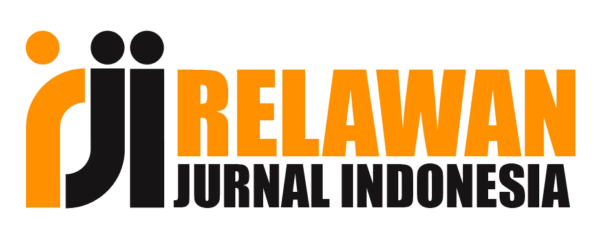Metacognitive writing task strategy to improve concept mastery and communication skills of junior high school students in the topic of light and optical instruments
Abstract
The purpose of this study was to improve students’ concept mastery and communication skills by implementing metacognitive writing task strategies and analyzing the correlation between students concept mastery and communication skills. The research method used is a quantitative quasi-experimental design method with a non-equivalent control group design research design. The results showed that students in the experimental class experienced an increase in mastery of concepts in the moderate category, namely <g>=0.542. Meanwhile, students in the control class experienced an increase in mastery of concepts in the low category, namely <g>=0.272. Students' communication skills have increased even though in the low category, namely <g>=0.261. There is a significant relationship between mastery of concepts and communication skills, the strength of the relationship between the variables of mastery of concepts and communication skills is 0.758 which falls into the category of strongly correlated.The conclusion obtained through this study is that writing task metacognitive strategies in learning is proven to improve students' mastery of concepts and communication skills.
Keywords
Full Text:
PDFReferences
Hake, R. R.(1999). Analyzing change/gain scores. AREA-D American education research association’s devision. D. Measurement and Reasearch Methodology.
Johnson, D. W., & Johnson, R. T. (1998). Cooperative learning and social interdependence theory. In Theory and research on small groups (pp. 9-35). Boston, MA: Springer US.
Kaewkhong, K., Mazzolini, A., Emarat, N., & Arayathanitkul, K. (2010). Thai high-school students’ misconceptions about and models of light refraction through a planar surface. Physics Education, 45(1), 97. https://doi.org/10.1088/0031-9120/45/1/012
Kamaruzzaman, K. (2016). Analisis keterampilan komunikasi interpersonal siswa. Journal Konseling Gusjigang, 2(2). 202-210. doi: https://doi.org/1023176/jkg.v2i2744.
Kemendiknas. (2020). Pengembangan Pendidikan Budaya dan Karakter Bangsa. Jakarta: Kementerian Pendidikan Nasional.
Maryanti, S. (2012). Hubungan antara keterampilan komunikasi dengan Aktivitas Belajar Siswa. Konselor, 1(2), 1-8. https://doi.org/10.24036/0201212700-0-00
Musliah, Purwanti, & Yuline. (2015). Analisis keterampilan komunikasi siswa dengan teman sebaya di sekolah menengah atas. Jurnal Pendidikan dan Pembelajaran, 4(12). 1-13.
Nurzaman, R. F. R., Yuningsih, E. K., Agustina, R. D., Zakwandi, R., Dirgantara, Y., & Kuntadi, D. (2021). An optical instrument worksheet in physics class. Journal of Physics: Conference Series 1869 (1), 012169.
Ouattara, F., & Boudaoné, B. (2012). Teaching and learning in geometrical optics in Burkina Faso third form classes: Presentation and analysis of class observations data and students’ performance. British Journal of Science, 5(1). 83-100.
Sheftyawan, W. B., Prihandono, T., & Lesmono, A. D. (2018). Identifikasi miskonsepsi siswa menggunakan four-tier diagnostic test pada materi optik geometri. Jurnal Pembelajaran Fisika, 7(2), 147-153.
Sinaga, P. (2014). Pengembangan program perkuliahan fisika sekolah untuk meningkatkan kompetensi menulis materi ajar calon guru menggunakan multi modus representasi. Universitas Pendidikan Indonesia: Sekolah Pasca Sarjana.
Slavin, R. E. (2018). Educational psychology, theory and practice, 12th Edition. New York: Pearson.
Sugiyono. (2015). Metode penelitian pendidikan pendekatan kuantitatif, kualitatif, dan R&D. Bandung: Alfabeta.
Sugiyono & Susanto. (2015). Cara mudah belajar SPSS dan lisrel teori dan aplikasi untuk analisis data penelitian. Bandung: Alfabeta.
Sumantri, M. S. (2015). Strategi Pembelajaran: Teori dan Praktik di Tingkat Pendidikan Dasar. Jakarta: Rajawali Press.
Sutopo. (2014). Miskonsepsi pada optika geometri dan remidiasinya. Journal Teaching Quality Improvment Programs, 5(2), 356–368
Wati, M. Y., Maulidia, I. A., Irnawat, I., & Supeno, S. (2019). Keterampilan komunikasi siswa kelas vii smpn 2 jember dalam Pembelajaran Ipa dengan model problem based learning pada materi kalor dan perubahannya. Jurnal Pembelajaran Fisika, 8(4), 275-280. doi: https://doi.org/10.19184/jpf.v8i4.15237
Yusefni, W. & Sriyanti, S. (2016). Pembelajaran IPA terpadu menggunakan pendekatan science writing heuristic untuk meningkatkan kemampuan komunikasi tulisan siswa SMP. EDUSAINS, 8(1), 9-17. http://dx.doi.org/10.15408/es.v8i1.1562
DOI: https://doi.org/10.17509/wapfi.v8i1.49529
Refbacks
- There are currently no refbacks.
Copyright (c) 2023 Irma Fitrianingsih

This work is licensed under a Creative Commons Attribution-ShareAlike 4.0 International License.
The Journal Wahana Pendidikan Fisika http://ejournal.upi.edu/index.php/WapFi/ is licensed under a Creative Commons Attribution-ShareAlike 4.0 International License
The Journal WaPFi (Wahana Pendidikan Fisika).
All rights reserverd. pISSN 2338-1027 eISSN 2685-4414
Copyright © Faculty of Mathematics and Science Education (FPMIPA) Universitas Pendidikan Indonesia (UPI)










